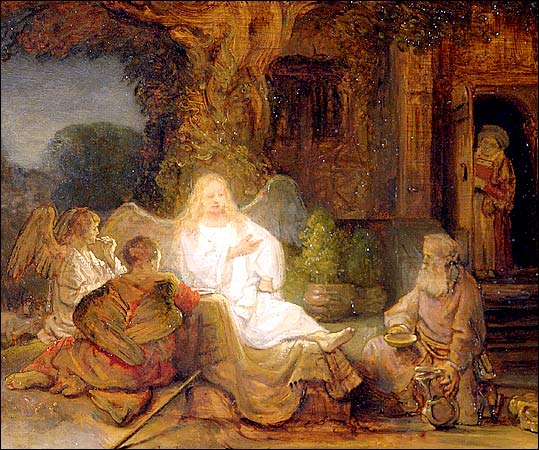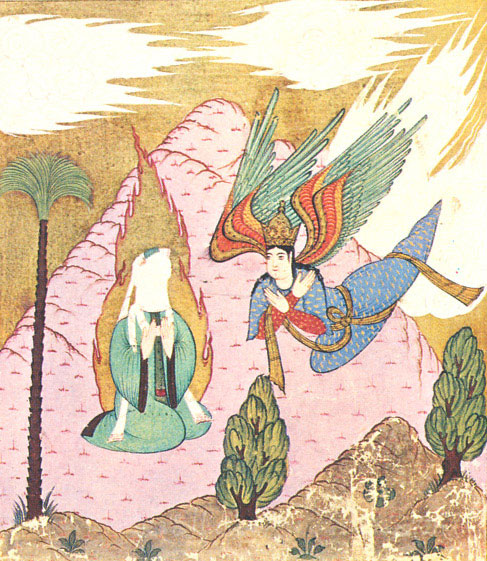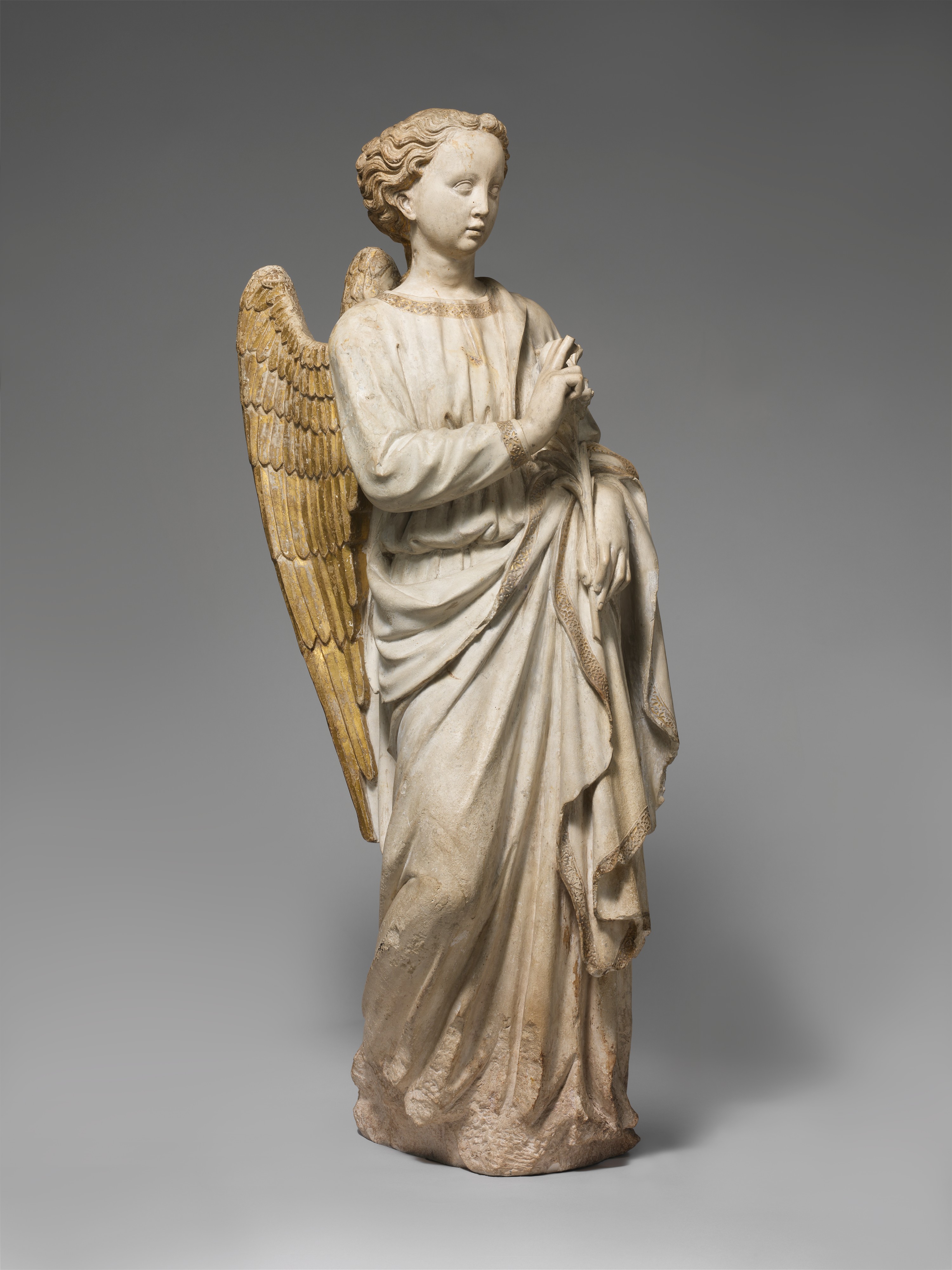|
Archangels
Archangels () are the second lowest rank of angel in the Catholic hierarchy of angels, based on and put forward by Pseudo-Dionysius the Areopagite in the 5th or 6th century in his book ''De Coelesti Hierarchia'' (''On the Celestial Hierarchy''). The Bible itself uses the term “archangel” two times referring to the angel Michael only in the New Testament. The Bible does not mention a particular hierarchy of angels in any detail aside from this. The word is usually associated with the Abrahamic religions and many offshoots they are historically associated with. ''Archangel'' is derived from Greek (), with the Greek prefix meaning 'chief'. In Catholic theology, archangels constitute the second-lowest rank of angel; much of modernized imaging of Archangels as we have today likely stems from the etymology of their name, as well as their presentation in John Milton's ''Paradise Lost''. In many offshoots of Judaism, with the oldest text coming from Enoch 1, the highest ranking ... [...More Info...] [...Related Items...] OR: [Wikipedia] [Google] [Baidu] |
Raphael (archangel)
Raphael ( , ; "God has healed") is an archangel first mentioned in the Book of Tobit and in 1 Enoch, both estimated to date from between the 3rd and 2nd century BCE. In later Jewish tradition, he became identified as one of the three heavenly visitors entertained by Abraham at the Oak of Mamre. He is not named in either the New Testament or the Quran, but later Christian tradition identified him with healing and as the angel who stirred waters in the Pool of Bethesda in John 5:2–4, and in Islam, where his name is Israfil, he is understood to be the unnamed angel of Quran 6:73, standing eternally with a trumpet to his lips, ready to announce the Day of Judgment. In Gnostic tradition, Raphael is represented on the Ophite Diagram. Origins in post-exilic literature In the Hebrew Bible, the word () means messenger or representative; either human or supernatural in nature. When used in the latter sense it is translated as "angel". The original mal'akh lacked both individua ... [...More Info...] [...Related Items...] OR: [Wikipedia] [Google] [Baidu] |
Uriel
Uriel , Auriel ( ''ʾŪrīʾēl'', " El/God is my Flame"; ''Oúriḗl''; ''Ouriēl''; ; Geʽez and Amharic: or ) or Oriel ( ''ʾÓrīʾēl'', "El/God is my Light") is the name of one of the archangels who is mentioned in Rabbinic tradition and in certain Christian traditions. He is well known in the Russian Orthodox tradition and in folk Catholicism (in both of which he is considered to be one of the seven major archangels) and recognised in Anglicanism as the fourth archangel. He is also well known in European esoteric medieval literature. Uriel is also known as a master of knowledge and the archangel of wisdom. In apocryphal, kabbalistic, and occult works, Uriel has been equated (or confused) with Urial, Nuriel, Uryan, Jeremiel, Vretil, Sariel, Suriel, Puruel, Phanuel, Jacob, Azrael, and Raphael. In the Secret Book of John, an early Gnostic work, Uriel is placed in control of the demons who help Yaldabaoth create Adam. Uriel, Auriel or Oriel (male) / Urielle, ... [...More Info...] [...Related Items...] OR: [Wikipedia] [Google] [Baidu] |
Michael (archangel)
Michael, also called Saint Michael the Archangel, Archangel Michael and Saint Michael the Taxiarch is an archangel and the warrior of God in Christianity, Judaism, and Islam. The earliest surviving mentions of his name are in third- and second-century BC Jewish works, often but not always apocalyptic, where he is the chief of the angels and archangels, and he is the guardian prince of Israel and is responsible for the care of the Israelites, people of Biblical Israel, Israel. Christianity conserved nearly all the Jewish traditions concerning him, and he is mentioned explicitly in Revelation 12:7–12, where he does battle with Satan, and in the Epistle of Jude, where the archangel and the devil dispute over the body of Moses. Old Testament and Apocrypha The Book of Enoch lists him as one of seven archangels (the remaining names are Uriel, Raguel (angel), Raguel, Raphael (archangel), Raphael, Sariel, Gabriel, and Remiel), who, in the Book of Tobit, “stand ready and ente ... [...More Info...] [...Related Items...] OR: [Wikipedia] [Google] [Baidu] |
Gabriel
In the Abrahamic religions (Judaism, Christianity, Islam), Gabriel ( ) is an archangel with the power to announce God's will to mankind, as the messenger of God. He is mentioned in the Hebrew Bible, the New Testament and the Quran. Many Christian traditions – including Eastern Orthodoxy, Catholicism, Lutheranism, and Anglicanism – revere Gabriel as a saint. In the Hebrew Bible, Gabriel appears to the prophet Daniel (biblical figure), Daniel to explain his visions (Daniel 8:15–26, Daniel 9, 9:21–27). The archangel also appears in the Book of Enoch and other ancient Jewish writings not preserved in Hebrew. Alongside the archangel Michael (archangel), Michael, Gabriel is described as the guardian angel of the Israelites, people of History of ancient Israel and Judah, Israel, defending it against the angels of the other peoples. In the New Testament, the Gospel of Luke relates the Annunciation, in which the angel Gabriel appears to Zechariah (New Testament figur ... [...More Info...] [...Related Items...] OR: [Wikipedia] [Google] [Baidu] |
Israfil
Israfil (, ''ʾIsrāfīl) o''r Israfel Lewis, James R., Evelyn Dorothy Oliver, and S. Sisung Kelle, eds. 1996. ''Angels A to Z''. Visible Ink Press. . p. 224. is the angel who will blow the trumpet to signal ''Qiyamah'' (the Day of Judgment) in Islam. Though unnamed in the Quran, he is one of the four archangels in Islamic tradition, along with Michael, Gabriel, and Azrael. The "Book of Dead" described Israfil as the oldest of all archangels. He is commonly thought of as the counterpart of the Judeo-Christian archangel Raphael.Gabriel " ''''. Israfil is portrayed as writing the destiny of humans and all commands of |
Pseudo-Dionysius The Areopagite
Pseudo-Dionysius the Areopagite (or Dionysius the Pseudo-Areopagite) was a Greek author, Christian theologian and Neoplatonic philosopher of the late 5th to early 6th century, who wrote a set of works known as the ''Corpus Areopagiticum'' or ''Corpus Dionysiacum''. Through his writing in ''Mystical Theology'', he has been identified as the "progenitor of apophatic or negative theology." The author pseudepigraphically identifies himself in the corpus as "Dionysios", portraying himself as Dionysius the Areopagite, the Athenian convert of Paul the Apostle mentioned in Acts 17:34. Historic confusions In the early sixth century, a series of writings of a mystical nature, employing Neoplatonic language to elucidate Christian theological and mystical ideas, was ascribed to the Areopagite. They have long been recognized as pseudepigrapha, and their author is now called "Pseudo-Dionysius the Areopagite". Corpus Works The surviving corpus comprises: * ''Divine Names'' (') ... [...More Info...] [...Related Items...] OR: [Wikipedia] [Google] [Baidu] |
De Coelesti Hierarchia
''De Coelesti Hierarchia'' (, "On the Celestial Hierarchy") is a Pseudo-Dionysian work on angelology, written in Greek and dated to ca. AD the 5th century; it exerted great influence on scholasticism and treats at great length the hierarchies of angels. In Catholicism Thomas Aquinas (''Summa Theologica'', I.108) follows the ''Hierarchia'' (6.7) in dividing the angels into three hierarchies each of which contains three orders, based on their proximity to God, corresponding to the nine orders of angels recognized by Pope Gregory I. # Seraphim, Cherubim, and Thrones; # Dominations, Virtues, and Powers; # Principalities, Archangels, and Angels. Editions Pseudo-Dionysius Areopagita, ''De Coelesti Hierarchia'' Surrey, 1935. Shrine of Wisdom . * G. Heil, A. M. Ritter, ''Pseudo-Dionysius Areopagita. De Coelesti Hierarchia, De Ecclesiastica Hierarchia, De Mystica Theologia, Epistulae'' (1991) . See also * Orthodox St. Dionysus Institute in Paris * Christian angelic hierarch ... [...More Info...] [...Related Items...] OR: [Wikipedia] [Google] [Baidu] |
Angel
An angel is a spiritual (without a physical body), heavenly, or supernatural being, usually humanoid with bird-like wings, often depicted as a messenger or intermediary between God (the transcendent) and humanity (the profane) in various traditions like the Abrahamic religions. Other roles include protectors and guides for humans, such as guardian angels and servants of God. In Western belief-systems the term is often used to distinguish benevolent from malevolent intermediary beings. Emphasizing the distance between God and mankind, revelation-based belief-systems require angels to bridge the gap between the earthly and the transcendent realm. Angels play a lesser role in monistic belief-systems, since the gap is non-existent. However, angelic beings might be conceived as aid to achieve a proper relationship with the divine. Abrahamic religions describe angelic hierarchies, which vary by religion and sect. Some angels have specific names (such as Gabriel or Mich ... [...More Info...] [...Related Items...] OR: [Wikipedia] [Google] [Baidu] |
Eastern Orthodox Church
The Eastern Orthodox Church, officially the Orthodox Catholic Church, and also called the Greek Orthodox Church or simply the Orthodox Church, is List of Christian denominations by number of members, one of the three major doctrinal and jurisdictional groups of Christianity, with approximately 230 million baptised members. It operates as a Communion (Christian), communion of autocephalous churches, each governed by its Bishop (Orthodox Church), bishops via local Holy Synod, synods. The church has no central doctrinal or governmental authority analogous to the pope of the Catholic Church. Nevertheless, the Ecumenical Patriarch of Constantinople is recognised by them as ''primus inter pares'' (), a title held by the patriarch of Rome prior to 1054. As one of the oldest surviving religious institutions in the world, the Eastern Orthodox Church has played an especially prominent role in the history and culture of Eastern Europe, Eastern and Southeastern Europe. Since 2018, the ... [...More Info...] [...Related Items...] OR: [Wikipedia] [Google] [Baidu] |
Deuterocanonical Books
The deuterocanonical books, meaning 'of, pertaining to, or constituting a second canon', collectively known as the Deuterocanon (DC), are certain books and passages considered to be canonical books of the Old Testament by the Catholic Church, the Eastern Orthodox Church, the Oriental Orthodox Church, and the Church of the East. In contrast, modern Rabbinic Judaism and Protestants regard the DC as Apocrypha. Seven books are accepted as deuterocanonical by all the ancient churches: Tobit, Judith, Baruch, Ecclesiasticus, Wisdom, First and Second Maccabees and also the Greek additions to Esther and Daniel. In addition to these, the Eastern Orthodox Church and the Oriental Orthodox Church include other books in their canons. The deuterocanonical books are included in the Septuagint, the earliest extant Greek translation of the Hebrew Bible. They date from 300 BC to 100 AD, before the separation of the Christian church from Judaism, and they are regularly found in o ... [...More Info...] [...Related Items...] OR: [Wikipedia] [Google] [Baidu] |
Biblical Apocrypha
The Biblical apocrypha () denotes the collection of ancient books, some of which are believed by some to be of doubtful origin, thought to have been written some time between 200 BC and 100 AD. The Catholic, Eastern Orthodox and Oriental Orthodox churches include some or all of the same texts within the body of their version of the Old Testament, with Catholics terming them deuterocanonical books. Traditional 80-book Protestant Bibles include fourteen books in an intertestamental section between the Old Testament and New Testament called the Apocrypha, deeming these useful for instruction, but non-canonical. Reflecting this view, the lectionaries of the Lutheran Churches and Anglican Communion include readings from the Apocrypha. Acceptance Some of the Biblical apocrypha were in the canon accepted by the earliest ecumenical councils. It was in Luther's Bible of 1534 that the Apocrypha was first published as a separate intertestamental section. The preface to the ... [...More Info...] [...Related Items...] OR: [Wikipedia] [Google] [Baidu] |
Catholic
The Catholic Church (), also known as the Roman Catholic Church, is the List of Christian denominations by number of members, largest Christian church, with 1.27 to 1.41 billion baptized Catholics Catholic Church by country, worldwide as of 2025. It is among the world's oldest and largest international institutions and has played a prominent role in the history and development of Western civilization.Gerald O'Collins, O'Collins, p. v (preface). The church consists of 24 Catholic particular churches and liturgical rites#Churches, ''sui iuris'' (autonomous) churches, including the Latin Church and 23 Eastern Catholic Churches, which comprise almost 3,500 dioceses and Eparchy, eparchies List of Catholic dioceses (structured view), around the world, each overseen by one or more Bishops in the Catholic Church, bishops. The pope, who is the bishop of Rome, is the Papal supremacy, chief pastor of the church. The core beliefs of Catholicism are found in the Nicene Creed. The ... [...More Info...] [...Related Items...] OR: [Wikipedia] [Google] [Baidu] |







